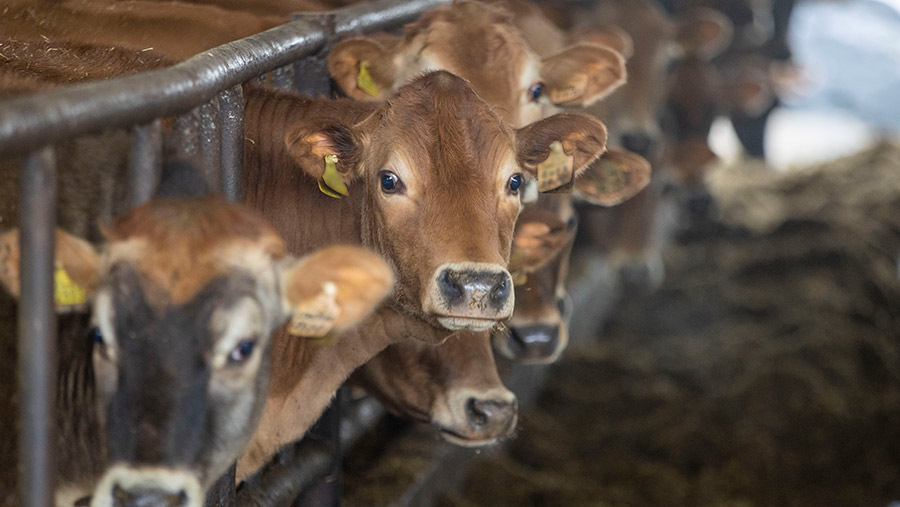Dairy adviser warns against reducing fertiliser to balance books
 © Jeff Holmes
© Jeff Holmes Soaring input costs should force dairies to scrutinise every cow on the farm and reduce exposure to volatility with home-grown forage.
This is the message of Lorna MacPherson, senior dairy consultant with SAC Consulting, who said that even with ammonium nitrate at £1,000/t, fertiliser is not a cost to cut back on.
“As tempting as it will be to cut back on fertiliser use, make sure you closely evaluate what the impact down the line might be if you have less silage next winter,” she said.
See also: How a dairy farm cut concentrate costs by £30,000
“Forward planning on silage carryover stocks and winter demand based on livestock numbers can help plan how much silage you need to make.”
Scrimping on nitrogen and using no sulphur risked increasing the farm’s demand for bought-in protein, she said. Adding sulphur to fertiliser could raise silage protein content by 2%.
Rather than cutting out costs, Dr MacPherson suggested asking where efficiency improvements might be found by considering the following:
- Check if every cow is earning its place on farm. Are any 300 days in milk and not in-calf?
- Are cows producing enough milk to justify their feed and management in relation to milk income?
- High yielders need feeding well to avoid body condition loss, fertility issues and an increased risk of metabolic diseases, and to ensure long-term fertility and milk output are not adversely affected in 12 months’ time
- Consider implementing a rotational grazing strategy if you have not done so already. If you are still set stocking, this change will improve grass yield and grass quality
- If highly stocked, early drying-off or culling could increase feed space and lying space for the rest of the cows. Could heifers or beef stock be sold earlier?
- Prioritise soil health and analysis. There is still time to correct lime status to increase grass yield.
